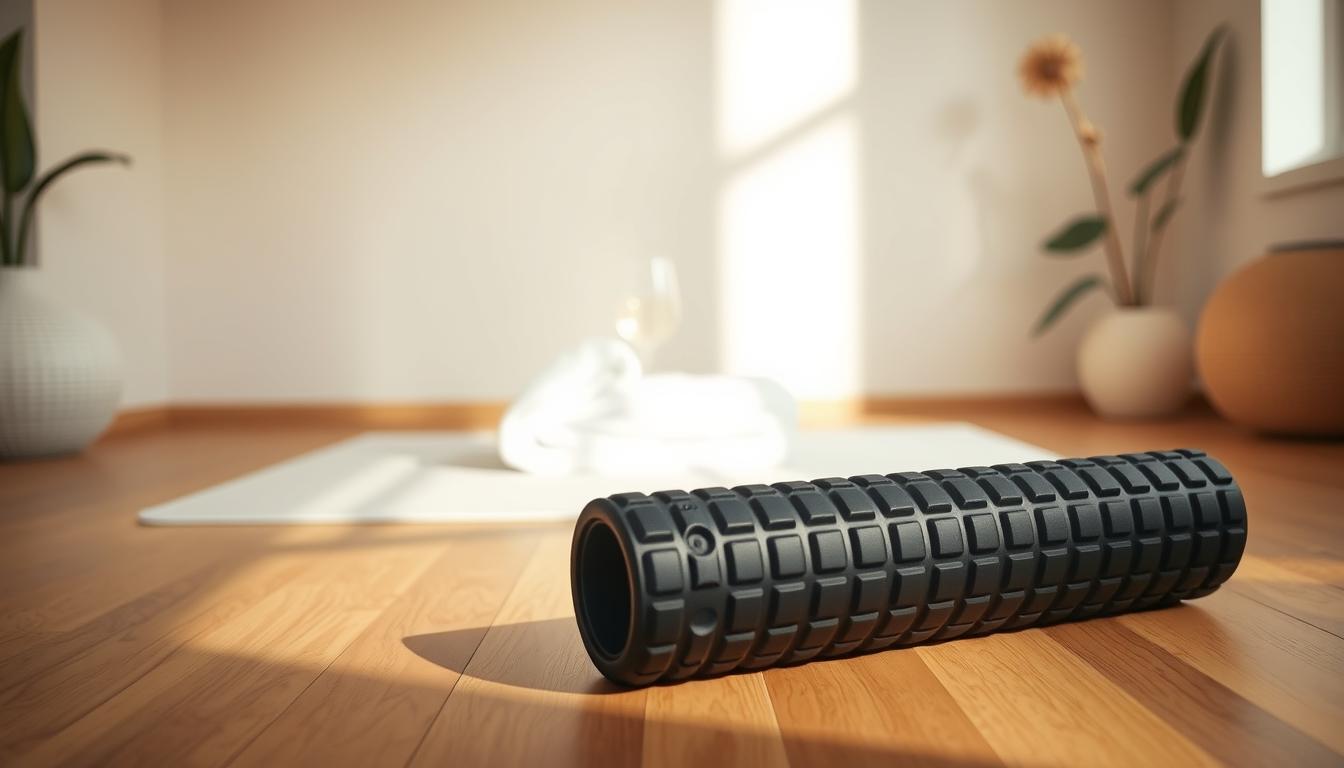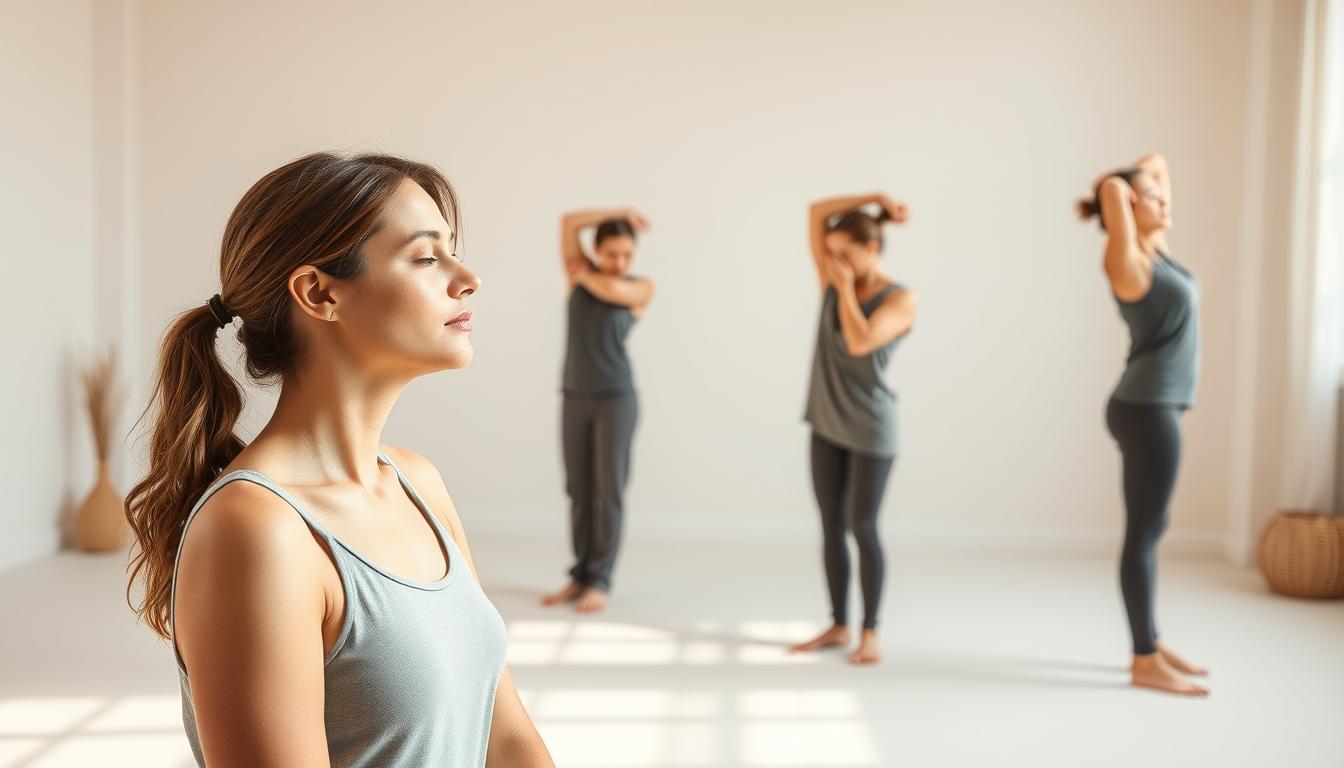In today’s fast-paced world, neck and upper back discomfort is common. This comes from bad posture and sitting too much. Adding exercises for the neck and upper back to your daily routine can really help. They make your muscles stronger, improve your posture, and lessen pain. This makes daily tasks easier and more fun.
Doing these exercises regularly can help with common problems. These include neck strain from too much smartphone use and back pain from sitting too long. This article will show you different ways to strengthen your neck and upper back. It aims to make your body stronger and healthier.
Introduction to Neck and Upper Back Strengthening
Having a strong neck and upper back is key for good health. Daily habits, like sitting a lot or often using a phone, can cause discomfort. Learning about neck exercises helps reduce tension and makes these areas work better. This leads to improved posture and better movement, which fights the bad effects of a not active lifestyle.
Adding exercises for the upper back into your workout helps not just your neck but also your balance and steadiness. Doing these exercises regularly lowers the chance of getting hurt and makes you healthier overall. Plus, for those with neck pain, these workouts make a big difference by fixing strength issues and making the muscles and bones healthier.
Benefits of Neck and Upper Back Strengthening Exercises
Exercises for the neck and upper back offer many health improvements. One main benefit is easing pain. People often feel discomfort from bad posture or not moving much. Strengthening these areas can help relax this tension.
These exercises also help with better posture. They strengthen spine-supporting muscles, making it easier to stand straight. This reduces the chance of muscle or joint problems. Better posture makes you look good and feel confident.
Adding these exercises to your fitness plan boosts mobility and injury protection. They make you more flexible and strengthen your tissues. This lets you move easily and enjoy everyday activities and sports.
Taking up these exercises leads to a healthier, active way of life. They are key for anyone wanting to offset a lifestyle with little movement.
Common Causes of Neck and Upper Back Pain
Many people feel pain in their neck and upper back because of several reasons. Poor posture, like sitting badly at desks or looking down at phones for too long, is a big cause. This bad habit makes muscles unbalanced and leads to pain.
Doing the same movements over and over can also hurt these areas. Stress is another problem. It makes muscles in the neck and upper back tense up.
Not moving enough is just as harmful. Nowadays, many people sit too much, which is bad for their spine. This lack of activity and not keeping muscles strong causes upper back pain.
Understanding these causes helps people start fixing the problems. Doing special stretches and exercises can really help with the pain. It improves how you feel overall.
Dynamic Warmup for Neck and Upper Back
Warming up is key in any exercise plan, mainly for the neck and upper back. This phase boosts blood flow, makes you more flexible, and readies your body for harder efforts. Not doing this critical step might lead to getting hurt or strained, so adding a good neck warmup is vital.
Importance of Warming Up
Doing a full warmup gets muscles and joints ready and gets your mind set for your workout. Dynamic stretches help you perform better and smoothly move into more intense exercises. A neck warmup routine also helps your muscles work together better, making it less likely you’ll get hurt or feel pain while exercising.
Dynamic Stretching Techniques
There are several dynamic stretches to wake up your neck and upper back. Here are some good ones to try:
- Neck Rolls: Gently roll your head around to relax your neck muscles.
- Shoulder Circles: Rotate your shoulders in a big circle, going both forwards and backwards.
- Torso Twists: Twist your upper body from one side to the other to wake up your back.
- Arm Swings: Swing your arms front to back to stretch your shoulders and back.
Adding these dynamic stretches to your warmup can really help make you more flexible and lower your chance of injury. It’s a great way to start your workout right.
Effective Neck and Upper Back Strengthening Exercises
Strengthening your neck and upper back improves posture, eases pain, and boosts overall function. Using resistance bands and bodyweight in your exercises brings great benefits. They work key muscles, enhance flexibility, and build endurance.
Resistance Band Exercises
Resistance band workouts are flexible and perfect for home routines. They include:
- Resistance Band Rows: Fix the band low down. Stand with feet apart, and pull towards your waist. Squeeze those shoulder blades.
- Face Pulls: Set the band at your head’s level. Pull its ends toward you, keeping elbows up. It makes your upper back strong.
- Shoulder Press: Stand on the band and push it overhead. This action stabilizes your shoulders and works the upper back.
Bodyweight Exercises
Bodyweight exercises build strength with no equipment. They include:
- Wall Angels: Stand against a wall. Slide your arms up and down, touching the wall. It helps with shoulder flexibility.
- Superman Lift: Lying face down, lift your arms and legs. It strengthens your lower back and helps core stability.
- Plank to Push-Up: Switch between plank and push-up positions. This boosts core strength and works several upper body muscles.
Static Stretching Post-Workout
After you work out, doing static stretches is key for recovery. It helps your body move from active to calm. Static stretching boosts flexibility, eases muscle stiffness, and helps you relax. Adding these stretches after exercise preps you for better future workouts.
Benefits of Static Stretching
Static stretching is great for your health. It targets areas like your neck and upper back. This helps with:
- Reducing muscle tightness and soreness
- Boosting flexibility and how far you can move
- Increasing blood flow to muscles
- Helping with mental relaxation and recovery
Recommended Static Stretches for Recovery
Adding the right stretches to your routine can improve recovery. Here are top stretches for the neck and upper back:
- Pec Stretch: Stand by a doorway, rest your forearm on the frame, and lean forward. This stretches your chest and shoulders.
- Upper Trapezius Stretch: Either sit or stand, then tilt your head one way and pull the opposite shoulder down. This stretches your neck deeply.
- Child’s Pose: Kneel, sit on your heels, and reach your arms forward. This relaxes your back and neck.

Sample Routine for Neck and Upper Back Pain Relief
Are you looking for a good neck pain relief routine? This section has a structured plan to help ease neck and upper back pain. It includes warm-ups, strength exercises, and stretches to improve muscle health and ease tension.
Start with these simple warm-up exercises:
- Gentle neck rotations (5 repetitions each direction)
- Shoulder shrugs (10 repetitions)
- Upper back extensions (5 repetitions)
After warming up, try some strengthening exercises for the upper back:
- Resistance band rows (3 sets of 10 repetitions)
- Wall angels (2 sets of 8 repetitions)
- Plank shoulder taps (3 sets of 10 repetitions)
Then, wrap up your routine with some stretches to increase flexibility:
- Child’s pose (hold for 30 seconds)
- Neck side stretches (hold each side for 20 seconds)
- Upper back stretch on a chair (hold for 30 seconds)
This personalized plan aims to balance your body to reduce neck and upper back pain. This can make you feel better overall.
Tips for Safe and Effective Workouts
When focusing on neck and upper back strengthening, follow key workout safety tips. These tips boost your workout’s effectiveness and reduce injury risks.
First, proper exercise form is crucial. Bad posture can hurt, especially in the neck and back. Always focus on correct alignment and movements.
Avoid quick, sudden movements. Move slowly between exercises for safety. This is especially important for stretching and strengthening work.
It’s important to listen to your body while working out. If something hurts, stop and check what you’re doing. Pushing through pain can cause more harm than good.
Take it slow with your progress. Start with easy weights or movements, then gradually do more. This approach helps you improve steadily and learn the right techniques.
Using these safety measures will make your workouts better. They’ll help you get stronger and more flexible, especially in your neck and upper back.
Consulting a Healthcare Professional
It’s vital to keep your neck and upper back healthy for overall wellness. Sometimes, you must see a healthcare pro, especially with bad or ongoing pain. These pros can check your symptoms and decide the best steps to take.
Seeing a pro is good for those with long-term pain or healing from injuries. Physical therapists know how to make a workout plan just for you. They use methods to strengthen weak spots and help you heal.
Knowing when to get pro advice is key for the right care. You should see a pro if you notice:
- Severe pain that stops you from daily tasks
- Pain that doesn’t go away with home treatments
- Can’t move your neck or upper back much
- Problems that get worse over time
Talking to a healthcare pro gives you a clear understanding of your situation. It also makes a way for you to get better and work better.
Conclusion
This article explained how to do strengthening exercises for the neck and upper back. By adding these exercises to your day, you’ll get stronger and feel better. These workouts make your neck and back strong, leading to less pain and better health overall.
These exercises do more than ease pain. They lower injury risk and make everyday movements easier. Remember, doing these exercises regularly and carefully is key to improving fitness.
Making your neck and upper back stronger is a smart move for your health. Start now, and you’ll build a stronger, more able body for the future. This means you can enjoy an active and happy life.



